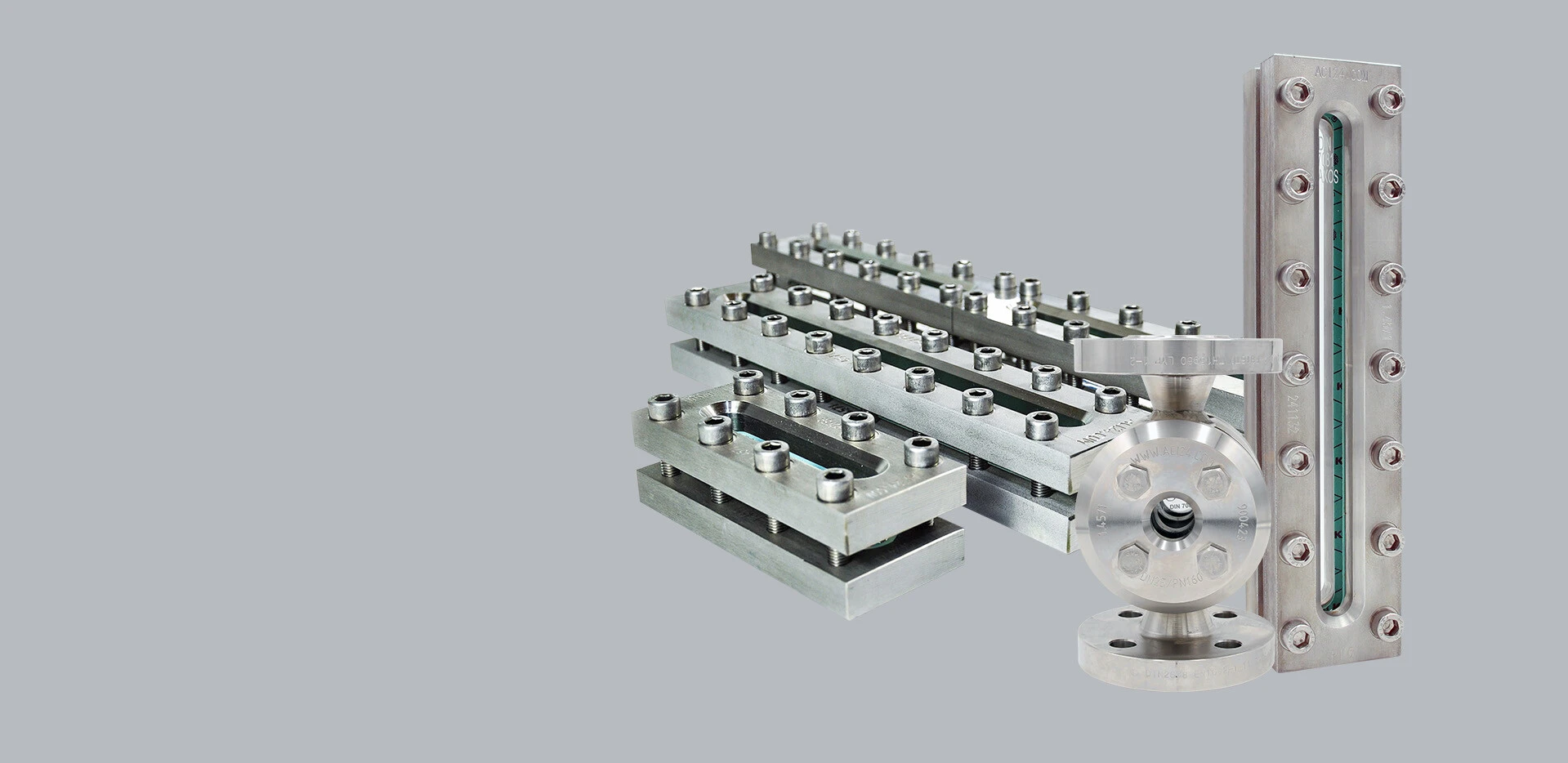
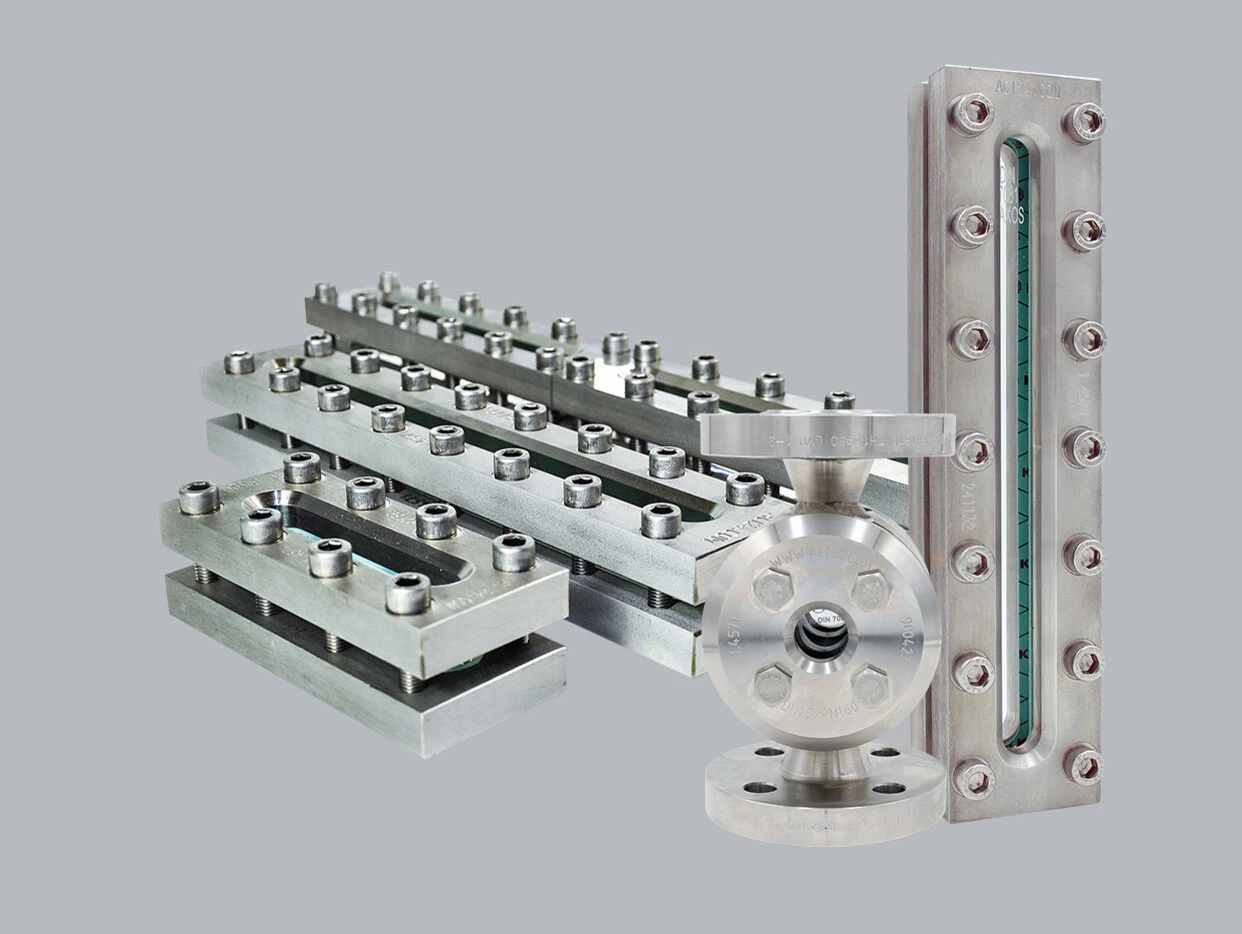
Sight glass fittings: Chemically resistant, maintenance-free, and indispensable for process monitoring
Sight glass fittings enable detailed observation of processes without the use of often complex and costly sensor systems. This report addresses common designs of sight glass fittings and their respective advantages and disadvantages, and explains some important selection criteria.
The core component of this sight glass fitting is a chemically and physically highly resistant glass, usually made of Borosilicate glass. If the working temperature exceeds the norm permissible of 280 °C, the glass can additionally be protected by an ACI mica protection screen. At temperatures above 320 °C, instead of tempered Borosilicate glass, untempered Borosilicate glass or glass discs based on quartz or sapphire are often used.
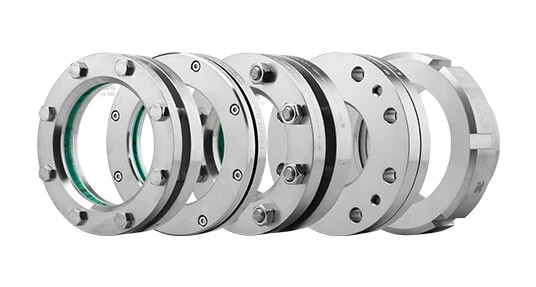
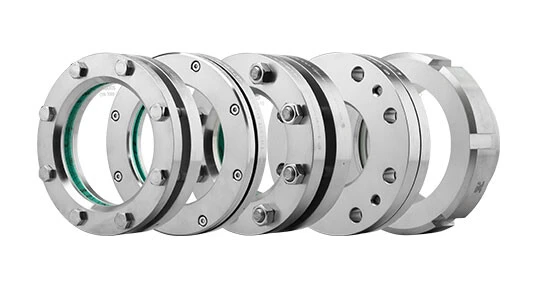
Through a sight glass fitting, optical observation of any process is possible, without the need for electronics or moving mechanics. This keeps the plant largely maintenance-free. If the chemical and physical conditions of the process are not adequately considered, the components of the sight glass fitting may be damaged by chemical influences or excessively high temperatures.
The main information you should provide to your sight glass supplier includes:
- Process medium
- Working temperature
- Working pressure
- Connection standard and dimensions
Common designs for sight glass fittings and their applications
Sight glass fittings can be roughly divided into three categories, each with different advantages and disadvantages. These categories are tank sight glasses, flow sight glasses, and level indicators.
Tank sight glasses
Container sight glasses consist of flat steel flanges, which are welded into a container wall or bolted onto support flanges depending on the design. The two most common designs for welding or bolting are shown in the image on the right.
These sight glass fittings can be adapted by plant engineers to pipelines and containers as needed. Container sight glasses are described in the standards DIN 28120 and DIN 28121. Other variants, based on the basic shapes described in the standards, have now established themselves in the market.
The ACI Type 320 according to DIN 28120 defines sight glass fittings for the welding process into container walls. The glass plate is placed with the gasket on the media side into a recess of the base flange and externally secured by the counter flange with a defined surface pressure. This construction allows for the replacement of damaged glasses with minimal effort. In the case of aggressive process media or high temperatures (over 280 °C), a Borosilicate glass plate can be protected from chemical influences by a mica layer in such container sight glasses, thereby increasing the possible working temperature to 300 °C.
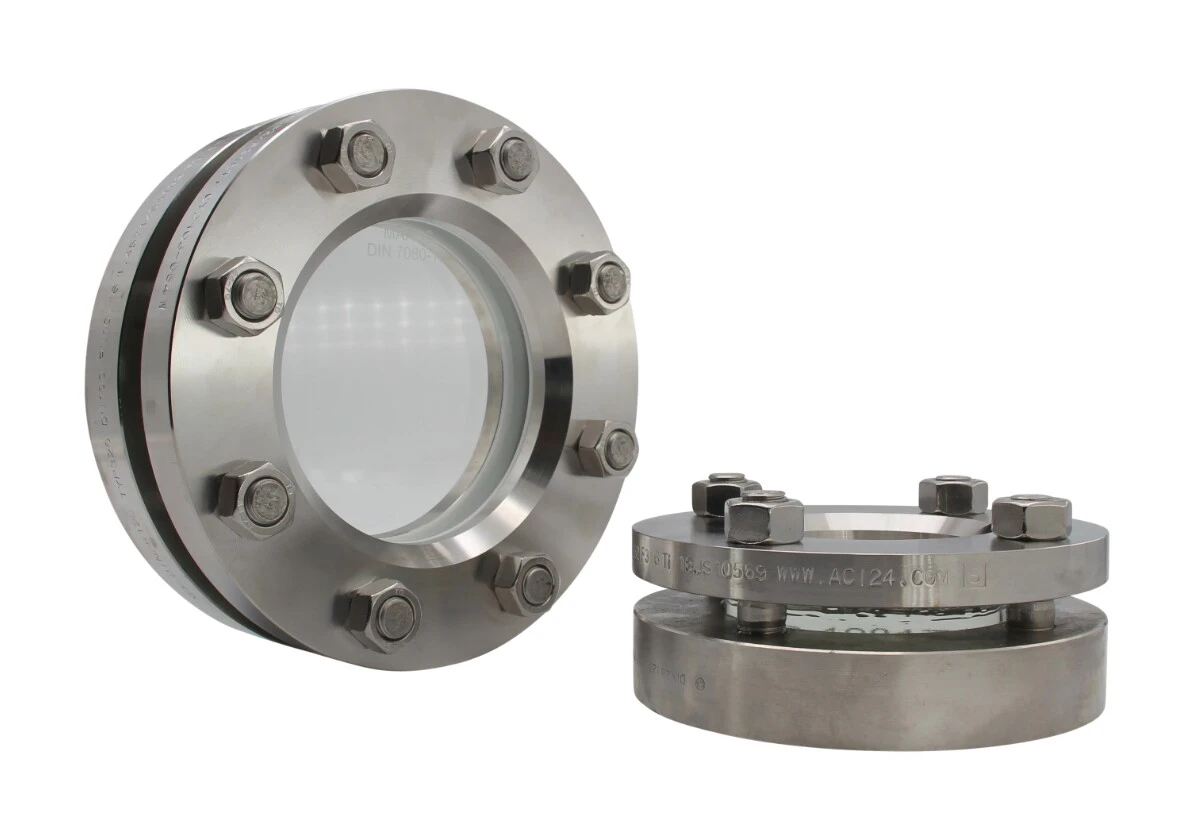
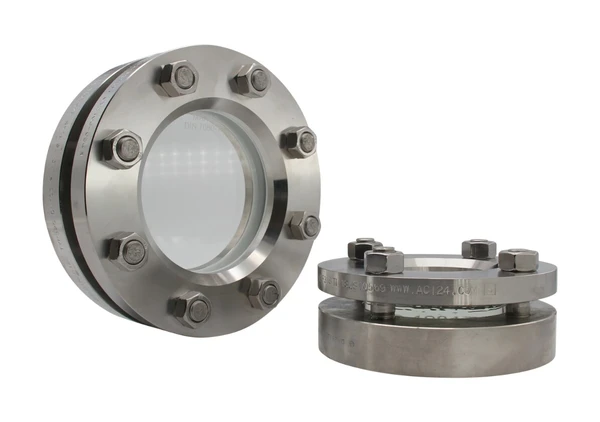
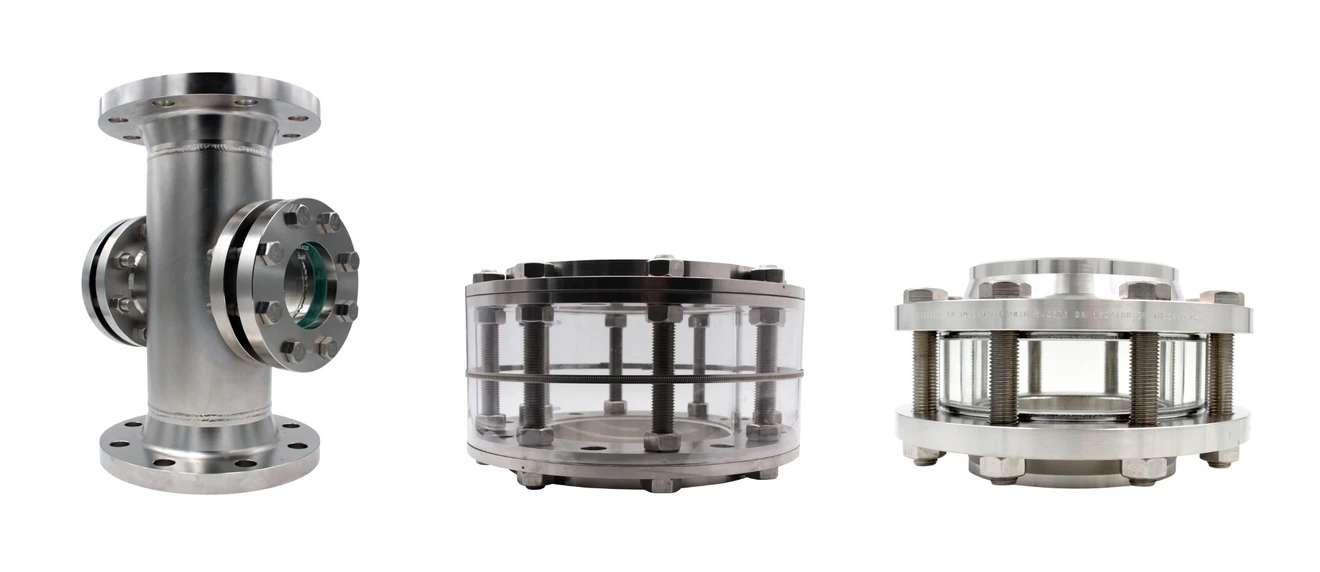
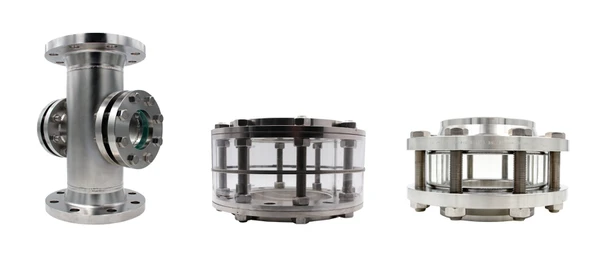
Flow sight glass fittings of the type 321 according to DIN 28121 are designed for installation on a flange.
The sealing here, unlike the type 320, is achieved through a PTFE-coated soft-material gasket in the force shunt. The flanges are bolted together with pre-tensioning screws until the metal surfaces are fully seated against each other. This process ensures a defined compression of the soft-material gasket and thus a reliable sealing of the flow sight glass fitting. This results in an almost completely closed fitting for the glass. The sight glass fittings according to DIN 28121 do not need to be disassembled for installation and can be completely replaced with relatively little effort. Replacement of individual components is not intended here and should only be carried out by the manufacturer.
Based on the specifications of DIN 28121, ACI Industriearmaturen GmbH has developed flow sight glasses that are designed for temperatures over 200 °C and pressures over 100 bar.
Flow sight glasses
Flow sight glasses are standardly equipped with flange connections and can be mounted in pipelines like conventional fittings. Most designs are available with screwed connections, welding ends, or flanges.
The basic version consists of a straight housing with two opposing viewports. Based on this, three-way or four-way sight glass fittings as well as variants with multiple viewports are available.
With appropriate design and material selection for the housing, glass, screws, and gaskets, this sight glass fitting variant is suitable for applications up to 400 °C and/or 400 bar.
For optimized process and media monitoring in the pipelines, tubular sight glasses can be used.
This design of sight glass fitting allows for a 360° all-round view and is characterized by an almost dead space-free construction. These properties make it suitable for hygienically demanding applications at moderate pressures (up to 16 bar). The low dead space interior also significantly reduces the flow resistance. Due to the larger open glass area, an additional impact protection made of Plexiglas is often installed.
Due to the design, the maximum permissible working pressure is significantly reduced, especially for larger nominal sizes compared to other flow sight glasses.
For high temperatures and pressures, there are also tubular sight glass fittings in intermediate flange design, which are available in quartz glass.



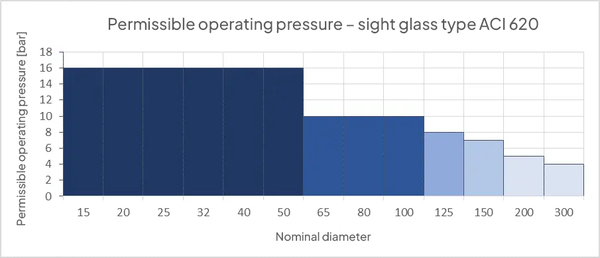






Level indicator
Level indicators are a special form of container sight glasses. The sight opening is here, as recognizable in the first image, kept slim and long. When such a sight glass is installed in a container, it offers the possibility to easily read the level from the outside. Neither float bodies nor other additional components are required. For clear, colorless liquids such as water, readability can be improved by using a so-called reflective glass. In these glasses, grooves are incorporated on the inside, which make the surface of the process medium more discernible due to the difference in the refractive index between air and liquids.
For some applications, it may be desirable to implement the level indicator as a bypass fitting. In such cases, instead of the superficially welded base flange, a rear-closed housing is used, which can be optionally equipped with welding ends, threaded connections, or flanges and is suitable for comparatively high pressures of 35 bar and more, as well as temperatures up to 243 °C.
Important Notes on the Use of Sight Glass Fittings
1. Maintenance Intervals
The maintenance requirements for sight glass fittings heavily depend on the operating conditions. With aggressive media, especially alkalis, regular replacement of the glass is recommended regardless of visible wear. If the effects of operating conditions on the glass are unknown, the glass should be thoroughly inspected regularly. Cloudiness, deformations, signs of corrosion, or superficial cracks compromise the safety of the sight glass. If such signs are detected, the glass plate should be replaced immediately. A replacement of the glass plate simultaneously requires a replacement of the shut-off valve on the media side.
2. Size of the Viewing Opening
In principle, a larger viewing opening requires a stronger glass sheet to withstand the same pressure as a smaller viewing opening. It is advisable to maintain the dimensions within the framework of DIN 7080, as the specifications contained therein can typically be procured with shorter delivery times and lower costs, which is particularly relevant for spare parts.
3. Sealing Materials
The material of the gasket must be selected according to the expected operating conditions. If the gasket is not suitable for pressure, temperature, or media, leaks can be expected during operation. Common sealing materials include, for example, bound aramid fibers, graphite, and PTFE.
4. Glass Material
The most commonly used material for sight glass fittings is borosilicate glass. This type of glass is characterized by very good resistance to most chemical influences, particularly acids, and can be used untempered up to 450 °C, tempered according to DIN 7080 up to 280 °C, and with mica protective screen up to 300/320 °C. For higher temperatures, quartz glass (up to 1000 °C) and sapphire glass (up to 2000 °C) have established themselves. Sapphire glass also exhibits excellent surface hardness.
5. Housing Material
Just like gaskets and glass, the metal housing of the sight glass fitting must be selected based on pressure, temperature, and medium. This typically falls under the responsibility of the sight glass manufacturers.
6. Connection Type and Size
To install the sight glass fitting in the system, the correct connection type and size must, of course, be used. It is therefore crucial that the sight glass manufacturer receives this information at the time of the inquiry.
7. Special Requirements for Construction
Some applications may impose special requirements on the sight glass fitting. This includes construction specifics such as additional connections for measuring points, low dead space interiors, or rounded edges to allow any adhering liquids to drain. Additionally, interior coatings may be possible to improve the acid resistance of the fitting, for example, through a PTFE coating.
8. Additional Equipment
Most sight glass fittings can be supplied with special equipment as needed. This includes, for example, housings for lamps in halogen or LED versions as well as wiper mechanisms and spraying devices for cleaning the sight windows. Heating systems for the sight glass panes and housings with heating jackets are also available upon request.
A project in mind?
We can help you!
Please feel free to contact us and we will discuss together how we can assist you!